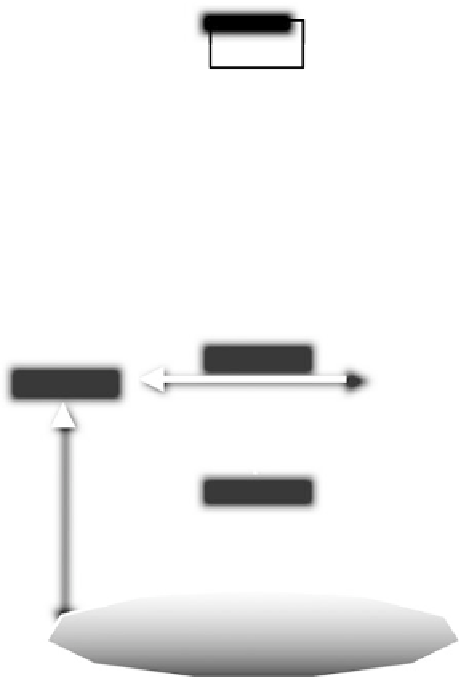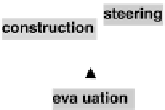Information Technology Reference
In-Depth Information
Fig. 15.2
The functional
organisation of cybernetic
devices.
To p
:basic
functionalities and their
associated operations.
Bottom
: relation of semiotic
dimensions to functionalities
and operations
then becomes possible to consider the general capabilities and limitations of various
classes of devices that possess varying abilities to adapt and evolve. Although the
more structural autonomy or constructive license given to a device, the greater the
potential creativity that is permitted, it should be remembered that greater degrees
of autonomy and creativity come at the expense of greater complexity and longer
periods of adaptive construction and evaluative testing.
The basic functionalities that constitute the functional organisation of adaptive
self-constructing cybernetic devices in this taxonomy are
coordination, measure-
ment, action, evaluation, steering
, and
construction
(Fig.
15.2
, top). Computational
operations here entail coordinative linking of output states with input states, and
include memory mechanisms for recording and reading out past inputs. Measure-
ment operations are carried out by an array of sensors that produce symbolic out-
puts whose values are contingent on the interaction of the sensors with their en-
virons. Actions are carried out by effectors that influence the external world. Ef-
fectors produce actions contingent upon internal decisions and commands that are
the output of the coordinative part. Steering mechanisms alter particular device
states or state-transitions without altering the device's set of accessible states or






















































































